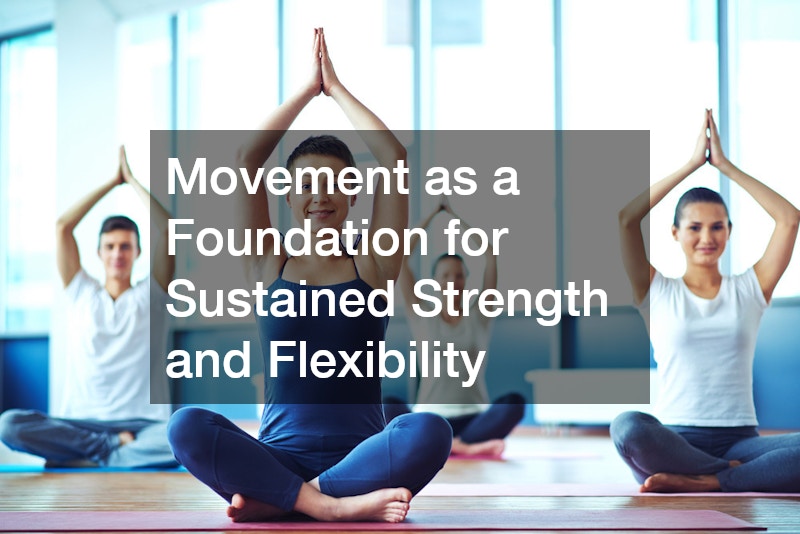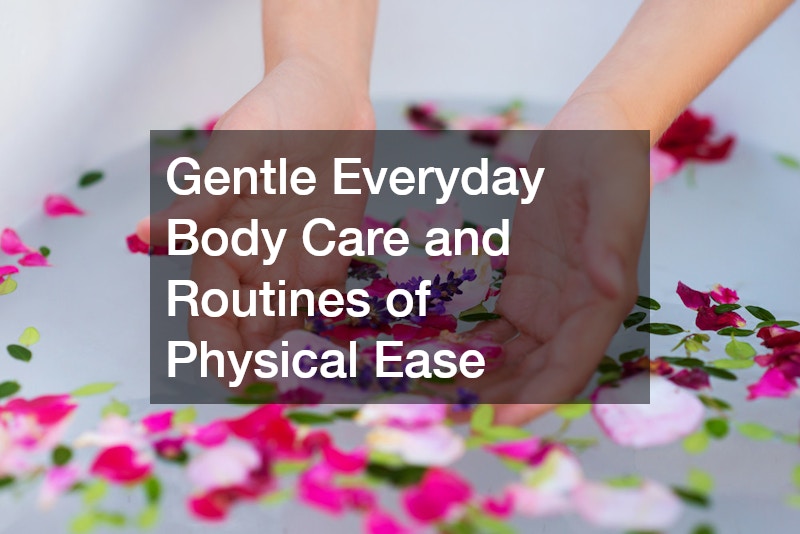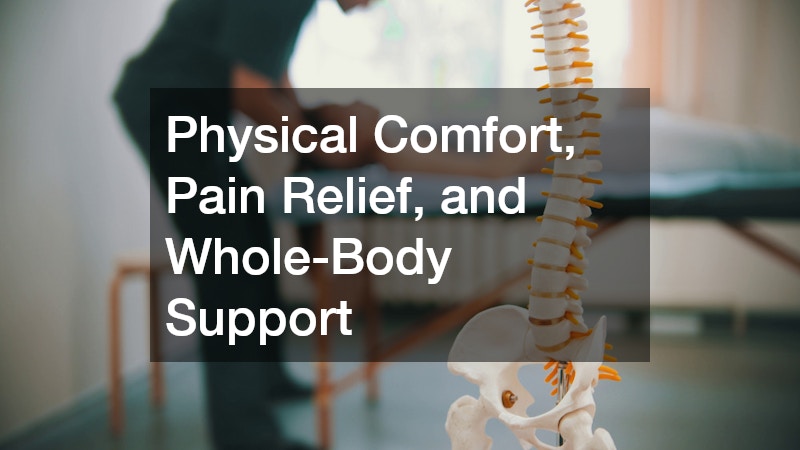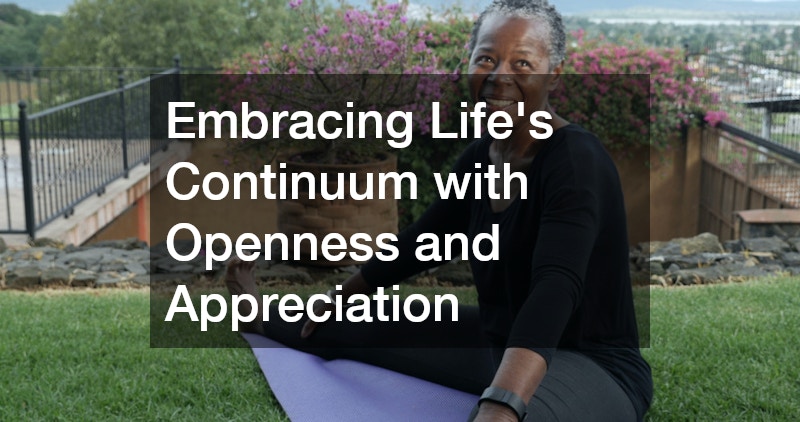The concept of well-being has evolved significantly over the past few decades. Where once the focus may have been on resisting change or attempting to hold onto youth, today’s more thoughtful approach encourages acceptance, wholeness, and personal harmony. Mindful living provides a pathway for slowing down long enough to listen to the body, observe the emotional world, and honor what matters most. Gentle wellness practices further support this journey by nurturing physical comfort and mental clarity, grounding individuals in practices that foster resilience throughout life. This approach does not seek to erase the natural transitions of time but to meet them with curiosity, compassion, and self-respect. In doing so, individuals discover that the later phases of life hold their own unique forms of beauty, wisdom, and joy.
Nourishing the Body with Supportive Foods and Daily Rhythms
Mindful nourishment plays a central and essential role in how individuals feel day-to-day and is a cornerstone for long-term health. The body responds to food not only physically, but also emotionally and energetically. For this reason, developing a relationship with food that is rooted in moderation, pleasure, and respect is invaluable. Eating slowly, selecting whole ingredients, and emphasizing a balanced approach to portions and meal timing help stabilize energy levels and mood, contributing to a sense of inner steadiness.
As metabolism adjusts over the years, nutritional needs may shift. For instance, protein becomes more important for maintaining muscle strength, while fiber supports digestive efficiency. Including leafy greens, multicolored vegetables, and whole grains provides nourishment at a cellular level. Hydration remains significant as well, as the skin, joints, and metabolic processes all rely heavily on adequate fluid balance. Herbal teas, broths, and infused waters offer gentle ways to stay hydrated throughout the day.
Social and cultural aspects of meals matter, too. Sharing food encourages connection, reduces stress hormone activity, and reinforces a sense of belonging. Through mindful eating practices, it becomes easier to understand subtle sensations of hunger and fullness, reducing overeating and improving digestion. This slow, thoughtful approach supports aging gracefully, allowing the mind and body to remain synchronized.
Personal care choices also influence self-perception. For some, choosing the best teeth whitening method suitable for their enamel type enhances confidence and promotes a sense of vibrancy. Though these decisions may appear cosmetic on the surface, they can reflect deeper goals of self-preservation and self-esteem. Every choice that honors the body, no matter how small, contributes to long-term well-being and a sustainable pattern of living that respects both the present moment and long-term health.

Movement as a Foundation for Sustained Strength and Flexibility
Physical movement supports the body in ways that extend far beyond muscles and bones. Regular movement enhances circulation, reduces inflammation, and helps maintain healthy balance and coordination. Gentle exercise, such as yoga, walking, swimming, or tai chi provides benefits without unnecessary strain. These practices elongate the muscles, improve posture, and soothe the nervous system, making them ideal long-term wellness companions.
Strength training, when approached thoughtfully, becomes essential for maintaining mobility and confidence. Loss of muscle mass can occur naturally over time, but it does not have to be inevitable. Light resistance training performed consistently supports joint health, bone density, and metabolic stability. Pairing movement with deep breathing further increases oxygen flow to tissues, improving recovery and reducing fatigue.
Guidance can often help individuals stay motivated and prevent overexertion. local personal trainer can offer structured, personalized support that adjusts to ability level, energy patterns, and long-term goals. This relationship encourages accountability and helps prevent injuries through proper technique.
Movement is also a key emotional regulator. Physical activity reduces stress hormones and increases endorphins, supporting mental health and cognitive clarity. When integrated into daily routines, it promotes steadiness and emotional resilience, helping individuals meet life’s demands with patience and strength. This steady, supportive approach to physical well-being supports aging gracefully in a way that feels empowering rather than restrictive.
Consistency, rather than intensity, is what matters most. Even small movements performed daily build strength, confidence, and vitality. The body thrives on attention, nourishment, and care, and movement is one of the most direct expressions of that care.
Cultivating Emotional Balance and Mental Clarity Through Mindfulness
Emotional well-being is deeply connected to physical health, shaping sleep patterns, immune responses, and cognitive function. Developing tools for emotional steadiness becomes increasingly important with time. Mindfulness practices help individuals observe their internal landscape without judgment, cultivating perspective and reducing reactivity.
Meditation encourages the mind to slow down, creating space between thoughts and responses. This sense of spaciousness makes it easier to process experiences, manage stress, and maintain mental clarity. Breathing exercises calm the autonomic nervous system, reducing tension and supporting digestion and cardiovascular health. Journaling offers another avenue for understanding emotional patterns and releasing thoughts that weigh heavily on the mind.
Seeking holistic doctors can further support emotional well-being, particularly when navigating layered or chronic stress. These practitioners often consider the full spectrum of physical, emotional, and lifestyle influences, providing support that goes beyond symptom management.
Aging involves navigating personal history, identity shifts, and evolving relationships. Mindfulness practices encourage curiosity and acceptance rather than resistance, which supports aging gracefully in an emotionally integrated way. With a compassionate internal dialogue, it becomes easier to acknowledge one’s own growth, limitations, and accomplishments. This inner stability becomes a guiding resource when facing uncertainty or change.
Mindful living is about inhabiting life fully, not perfectly. It invites ongoing self-discovery and honors the value of rest, spaciousness, and presence. These practices help individuals maintain mental clarity and connection, guiding them toward a deep and lasting sense of well-being.

Gentle Everyday Body Care and Routines of Physical Ease
Supportive body care practices encourage comfort and can prevent physical stress from accumulating over time. Something as simple as taking warm baths to soothe tense muscles or elevating the legs to support circulation provides relief. Establishing daily and weekly care routines helps maintain a sense of groundedness and self-respect.
Personal grooming also plays a role in supporting confidence. Visits to a nail salon, for example, can offer more than cosmetic upkeep. The act of being cared for, touched gently, and attending to one’s appearance can lift mood and reduce stress. Likewise, simple skincare routines performed consistently maintain hydration, elasticity, and comfort.
Addressing musculoskeletal comfort becomes essential as posture, habits, and lifestyle patterns develop over the years. Chiropractic adjustment services can help realign the body, improve mobility, and relieve chronic tension. Complementary approaches such as stretching, foam rolling, or massage enhance these effects by supporting circulation and releasing stored muscular holding patterns.
For those experiencing persistent discomfort, specialized back pain treatment may be necessary to restore comfort and prevent further strain. Supportive care approaches focus on long-term improvement rather than temporary suppression of discomfort, fostering sustainable well-being.
These routines and care approaches directly encourage aging gracefully by emphasizing comfort, attentiveness, and daily maintenance rather than corrective or extreme interventions. They remind individuals that tending to the body is not an indulgence but a form of essential respect.
Subtle Aesthetic Support and Gentle Enhancements
Some individuals choose subtle appearance-related treatments as part of feeling aligned with their self-image. These choices do not need to come from vanity; instead, they can reflect care for identity, personal expression, and inner confidence.
Laser therapy can be used to support skin rejuvenation, helping to even tone and texture in gentle, non-invasive ways. These treatments stimulate the skin’s natural restorative processes and can enhance radiance without aggressive methods.
For individuals experiencing changes in the eyelids due to elasticity and collagen shifts, consulting eyelid lift surgeon can offer clarity about whether a subtle procedure could restore comfort and openness to the eyes. Such procedures can be performed with precision, focusing on natural results rather than dramatic alteration.
Similarly, the support of a cosmetic dentist can help individuals maintain oral comfort, function, and aesthetic harmony. Smiling plays a central role in communication, connection, and emotional signaling. Supporting oral health can therefore influence confidence, mood, and social engagement.
These aesthetic decisions can support aging gracefully when approached thoughtfully rather than from a place of pressure or unrealistic expectations. The goal is not to change who one is, but to maintain a sense of familiarity with one’s reflection and to support comfort and embodiment.

Physical Comfort, Pain Relief, and Whole-Body Support
Over time, the body may communicate more clearly about what it needs. Pain signals, muscle tightness, and stiffness are not signs of decline but invitations to adjust routines, posture, movement patterns, or habits. Gentle interventions can help alleviate these discomforts before they become chronic limitations.
Support for joint and muscle comfort may come through bodywork, stretching, or therapeutic exercise. Chiropractic care, particularly when performed thoughtfully and combined with supportive strengthening routines, can restore alignment and physical ease. When persistent discomfort interferes with daily activities, specialized back pain treatment plans can help create strategies for movement, rest, and ergonomic adjustments.
The emotional dimension of pain also matters. When discomfort is acknowledged rather than ignored, individuals gain agency in their healing process. This sense of agency supports aging gracefully by encouraging intentionality and active participation in personal well-being.
The relationship between mind and body remains central. Pain can indicate the need for rest, hydration, improved sleep hygiene, or changes in daily movement habits. Addressing these signals thoughtfully helps maintain comfort and autonomy over time.
Connection, Community, and Meaningful Living
Social health remains an essential component of long-term wellness. Relationships provide emotional nourishment, reduce stress, and reinforce a sense of purpose. Maintaining friendships, family bonds, community involvement, or mentorship roles contributes to psychological resilience. Sharing stories, laughter, and daily experiences supports cognitive and emotional vitality.
Personal goals may evolve with time, shifting toward activities that emphasize creativity, contribution, or exploration. Whether someone engages in gardening, reading circles, volunteering, or outdoor activities, the act of participating contributes to emotional warmth and satisfaction. These experiences help anchor identity and remind individuals that meaningful living often emerges through small, consistent expressions of presence and curiosity.
Supportive relationships can also bolster physical wellness efforts. Joining a group exercise class, for example, can make movement more enjoyable. A weight loss service may provide guidance and accountability for individuals who seek support in balancing metabolism, activity, and nourishment. Similarly, clubs, community centers, faith-based groups, and creative workshops offer opportunities to stay socially active and mentally stimulated.
Technology can play a supportive role as well. Video chats, group messaging, and online interest communities help maintain long-distance relationships and support new connections. This can be especially valuable for those who have relocated, who live independently, or who lack nearby family support. Social connection helps reduce feelings of isolation and strengthens emotional resilience.
Purpose fosters mental clarity and resilience. Activities that offer meaning do not need to be grand or publicly recognized; quiet forms of fulfillment are equally powerful. This perspective supports aging gracefully by recognizing that individual identity continues growing, shifting, and deepening through all phases of life. Each moment of connection, whether shared with others or discovered privately, contributes to a life rich with warmth, value, and humanity.

Embracing Life’s Continuum with Openness and Appreciation
Aging is not an endpoint but a continuous process of adaptation and discovery. With mindfulness and gentle wellness practices, individuals can honor the body’s needs, cultivate emotional steadiness, and nurture meaningful relationships. This journey is not about perfection but about presence and appreciation.
Reflecting on one’s life experience can bring a sense of integration, acceptance, and peace. Self-compassion, patience, and curiosity become guiding principles for living with authenticity.
This perspective encourages aging gracefully by focusing not on external comparison but on internal alignment. It invites individuals to care deeply for their physical comfort, emotional clarity, and sense of purpose. By making thoughtful choices each day, the process becomes a practice of honoring the fullness of life.
Ultimately, aging gracefully reflects a way of living that embraces change rather than resisting it. With mindful awareness and gentle wellness practices, the later chapters of life can be rich with meaning, connection, and personal depth. This approach turns aging into a journey of continued growth and expanding peace—one that values presence, compassion, and enduring self-respect.



